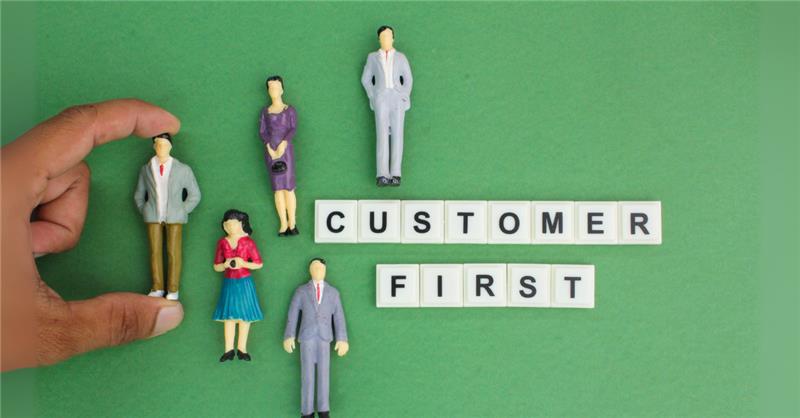The businesses winning today aren’t just selling products but building communities. They have discovered a powerful secret: putting the customer at the heart of every decision isn’t a cost – it’s your most powerful engine for business growth.
This is the customer-first business model. It’s a deep shift in how a company operates, from the product team to the support desk. It means truly listening, adapting, and valuing the person on the other end of the transaction. As business consultant Deepak Mandy puts it, “Customer loyalty is the new currency. The companies that thrive are those that earn it daily.”
The Power of a Customer-First Approach in Modern Business
Once, businesses won with scale, cost-cutting, and advertising muscle. Today, the winners are those who can make a customer feel seen and valued. Loyalty isn’t bought with points on a card; it’s earned with trust, empathy, and experience.
As Deepak Mandy, business consultant and mentor, likes to remind founders:
“Revenue follows relevance. If your customer feels forgotten, so will your growth.”
That line lands because it’s true. A customer-first approach is no longer just good practice – it’s survival.
Building Trust and Loyalty Through Exceptional Customer Experience
Trust isn’t a slogan you display on a website. It’s built in the small moments: the late-night support reply, the honest refund, the “we’ll fix it” attitude.
- Personal touches stick – An email that uses a customer’s name. A recommendation that actually fits.
- Consistency counts – From the shop floor to the mobile app, customers expect the same warmth.
- Honesty travels – People will forgive mistakes if you own them. They won’t forgive being lied to.
Great customer experience isn’t about free upgrades. It’s about giving people the sense that they matter.
How Customer Feedback Shapes Long-Term Growth Strategies

Feedback is the compass you didn’t know you had. Ignore it, and you are lost at sea. Lean in, and it points straight to business strategies that fuel growth and long-term business development.
Picture a bakery. Customers keep asking for sourdough. At first, you shrug. But then you notice a sales dip. You test sourdough, and it sells out. That’s feedback as fuel.
- Numbers whisper the truth – NPS, CSAT, and churn rates may seem like dry acronyms, but they reveal what people truly feel.
- Act fast – Feedback means nothing if it gathers dust on a dashboard.
- Invite conversation – Polls, beta tests, and review replies show customers you are listening.
As Deepak Mandy explains:
“Every complaint highlights a crack. Every suggestion points to demand. Together, they map your next move.”
Customer Retention vs Customer Acquisition: Where to Invest
Here’s the blunt truth: getting new customers is like filling a bucket full of holes. Unless you patch retention, you will always be topping up.
- Retention wins the maths game – Repeat customers buy more and recommend more.
- Acquisition still matters – Growth needs fresh blood. But it’s a sprint compared to the marathon of loyalty.
- The sweet spot is balance – Acquisition fills the funnel. Retention keeps it from leaking.
Amazon cracked this with Prime. They don’t just want sign-ups. They want customers who stay for the long haul.
Case Studies of Brands Winning with Customer-Centric Strategies

- Zappos: Shocked the world by making customer service its calling card. Some customers literally called just to chat, and Zappos didn’t mind.
- Netflix: Doesn’t guess what you’ll like. It knows, because you told it without saying a word.
- Tesla: Users report bugs; days later, cars get software updates. That’s customer input transformed into real-world upgrades.
Technology and AI in Driving Customer-First Strategies
Tech should be the butler, not the boss. It should make things smoother, not colder.
- Chatbots that don’t sound robotic – They handle the midnight questions humans can’t.
- Analytics that predict – Spot patterns before customers say a word.
- CRM tools that remember – No one likes repeating their story twice.
Automation buys time. Empathy spends it wisely.
Turning Satisfaction Into Repeat Business and Advocacy
Satisfied customers return. Delighted customers recruit. That’s the jump from “I’ll buy again” to “You must try this.”
- Referrals turn whispers into megaphones – Incentives help, but excitement is the real currency.
- Communities build belonging – A Facebook group or Slack channel can feel like a club for insiders.
- User content shines – A selfie with your product is worth more than a billboard.
Advocates don’t just spend – they sell for you. And their pitch is free.
Future Trends: Why Customer-First Strategies Will Dominate

Tomorrow’s businesses won’t win by shouting the loudest. They will win by listening the closest.
- Hyper-personalisation – Services that transform in real time to fit your needs.
- Values-first choices – Customers will choose brands that align with their ethics.
- Proactive service – Fixing problems before customers even notice.
Deepak Mandy sums it up neatly:
“Technology may widen your reach. But loyalty deepens your roots. The businesses that thrive tomorrow will be the ones that cared most today.”
Your Customer-First Launchpad
- Review every touchpoint. Where do customers stumble?
- Create listening posts – surveys, reviews, live chats.
- Train your team for empathy as much as efficiency.
- Use tech to scale, not to replace care.
- Measure loyalty, not just revenue.
The world isn’t short of products. It’s short of businesses that make people feel valued. Put the customer first, and you don’t just earn their money – you earn their story. And that story is the one they will tell long after the transaction ends.
Meta Title:
Customer-First Business Strategies | Turning Loyalty Into Growth
Meta Description:
Discover how customer-first business strategies build trust, boost loyalty, and drive long-term growth. Learn key insights from business consultant Deepak Mandy.
